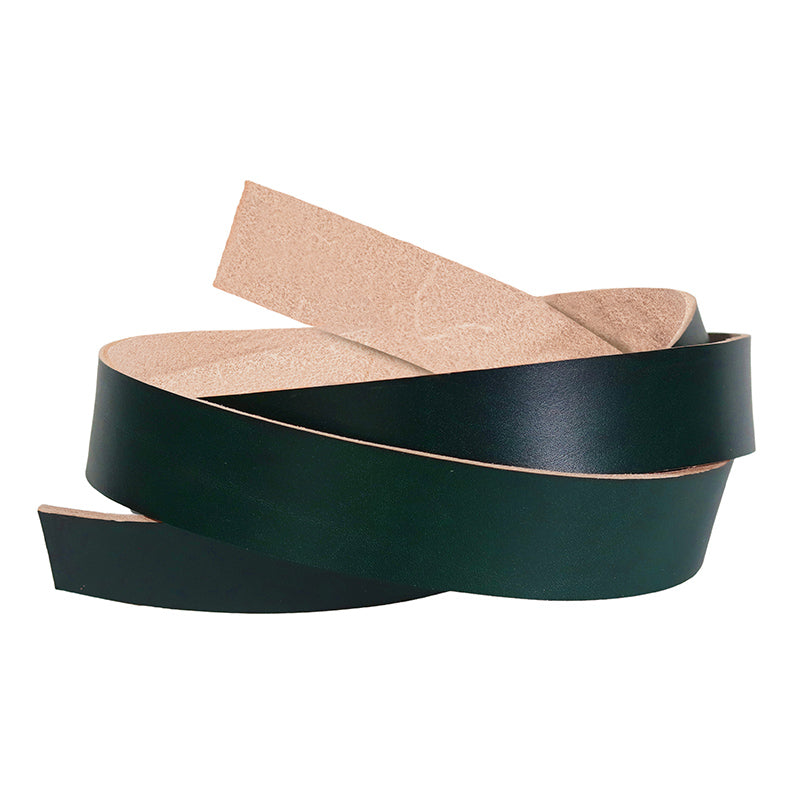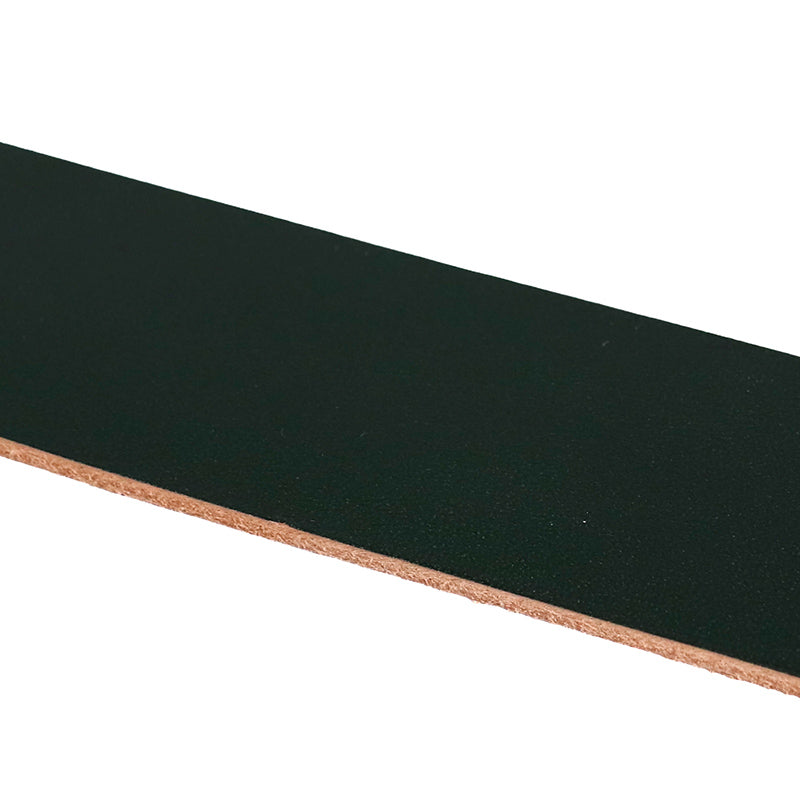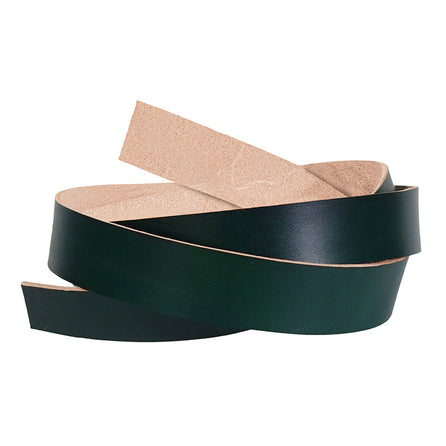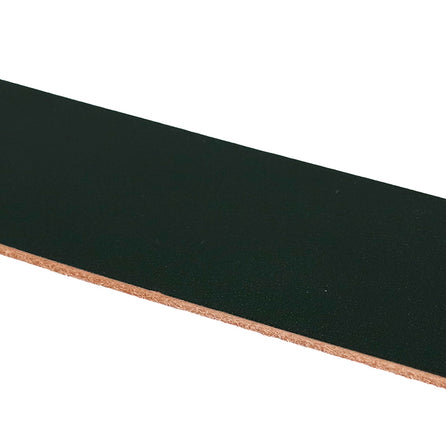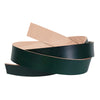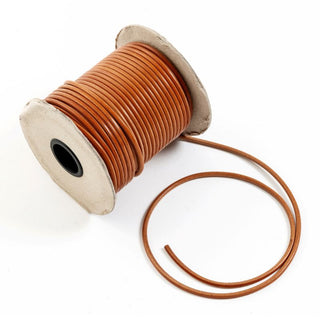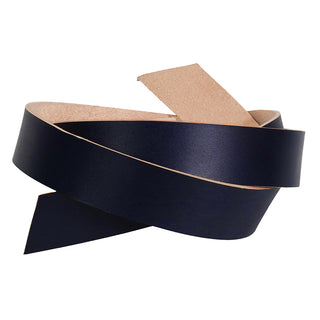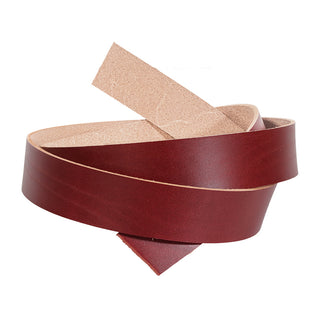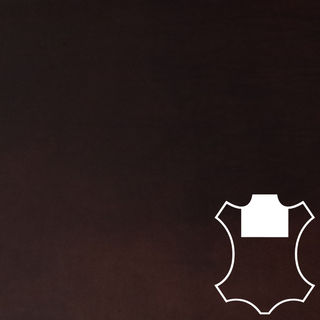

The quality of our vegetable-tanned Niagara shoulder straps for all your equestrian and leather goods realizations.
Niagara forest green straps finish:
The aniline bridle finish is the main distinguishing feature of these straps. It is ideal for adhering to tallow leather. It masks tightness in the leather, smoothes out wrinkles and adds depth to the color.
Features of Niagara forest green straps :
Niagara saddlery leather is 100% natural, full-grain, unpressed and uncorrected, with smooth grain and flesh . It is vegetable-tanned, and therefore non-allergenic. Vegetable tannins make the leather firm and resistant. It is fed through the heart in a tallow bath (a mixture of paraffin and beef fat), more commonly known as " tallow leather". This nourishment makes the leather easier to cut and work, and gives it greater resistance to water. Tallow ensures maintenance-free leather, as the fat is constantly applied to the surface of the leather. Thanks to this food,Niagara saddlery leather is highly resistant to outdoor use, rejecting any external disturbance (water / salty environment). This saddlery leather is therefore suitable for intensive wear.
Origin and traceability of Niagara forest green straps:
Niagara forest green straps come fromtargetedlivestocks from France, Germany, Spain and Italy. To ensure the quality of the leather used in its production, a leather traceability process has been implemented at Radermecker Tannery. The hides are marked 3 times with 3 identifiers at each stage: on receipt of the hides, enabling traceability of the origin of the hides; during the tanning process; during the finishing process. Traceability covers sourcing, drum, finishing and the associated quality test.
Niagara forest green straps:
Niagara forest green leather straps can be used for all leather goods, small leather goods and cutlery items: belts, bag handles, bracelets, watch straps, dog and cat collars, etc. It's the most sought-after leather for making belts, thanks to its resistance to elongation and its nourishment, guaranteeing long life. It's the most sought-after leather for the réalization belts, thanks to its resistance to elongation and its nourishment, guaranteeing long life.
It can also be used for harness parts: halters, snaffles, harnesses, bridle reins, headpieces, uprights, browbands, nosebands, lanyards, throat straps and girths.
Wondering between ourNiagara saddlery leather and ourPykara saddlery leather ? Our blog article " leather goods : Niagara or Pykara leather? "will help you make the right choice!
Dimensions and hide area of Niagara forest green straps :
The shoulder corresponds to the animal's neck and is an often wrinkled part due to the movements of the animal's head.
We offer Niagara forest green straps in 6 sizes:
- Length 120cm x Width 3cm
- Length 120cm x Width 3.5cm
- Length 120cm x Width 4cm
- Length 140cm x Width 3cm
- Length 140cm x Width 3.5cm
- Length 140cm x Width 4cm
Origin and traceability of Niagara forest green straps:
Niagara forest green straps come fromtargeted beef and bulllivestocks from France, Germany, Spain and Italy, mainly from the Limousin breed of cattle. To ensure the quality of the leather used in its production, Radermecker Tannery has set up a leather traceability process. The hides are marked 3 times with 3 identifiers at each stage: on receipt of the hides, enabling traceability of the origin of the hides; during the tanning process; during the finishing process.
Care instructions for Niagara forest green straps :
Thanks to tallow bath feeding, the fat is impregnated throughout the entire thickness of theNiagara saddlery leather , so there's no need to feed over time. Food can be applied to the flower to ensure its greasy appearance or to accelerate the leather's patina. This care of the grain ensures a longer life. OurNiagara saddlery leather will resist humidity. Simply leave to dry at room temperature to regain its appearance. Because it is fed in a tallow bath (grease), temperature shocks can cause a whitish film of paraffin to form. Simply rub it off.
Discover leather care tips from your tannery and 2 expert customers on the blog post "Leather care

